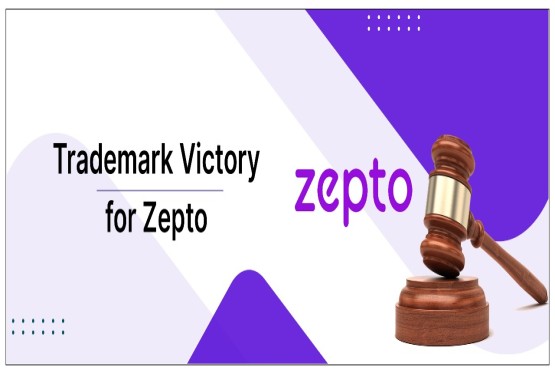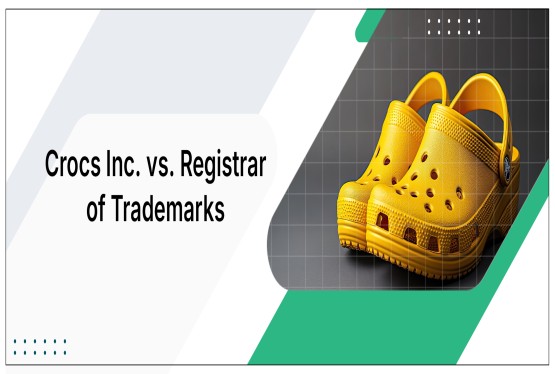The trademark registration process is not just complex but also lengthy. Usually it takes 7 to 9 months for a trademark registration in India. There are various stages of trademark registration in India and complying with them is a necessary condition for a smooth trademark registration process.
It is important to comply with trademark registration process duly because if left unattended, your trademark can be marked as- “Trademark Status Abandoned”
By trademark abandoned, it means that the trademark application has been discontinued in between the process either by applicant or the registrar of trademarks. This status is granted by the registrar when the applicant is not able to attend the notice and take necessary action regarding it, either for objection, opposition or renewal.
However, a trademark applicant can also file for the abandonment of the trademark during the process of trademark registration in India.
Understanding Trademark Abandonment in Indian Law
Trademarks in India can be abandoned for various reasons as per the Section 132, Chapter IV and provisions dealing with trademark opposition and registration of Trade Marks Act, 1999.
Various reasons for abandonment of trademarks:
-
Non use of Trademark
-
Lack of Intention to use
-
Cancellation proceedings by the third party
-
Non Renewal of Trademark after expiry
-
Non responsiveness
Read Trademark Abandonment in India by Compliance Calendar to know more about how a trademark is abandoned and how to protect your mark from such situations.
The Right Time to File for Trademark Abandonment
As an applicant for a trademark in India, you wouldn't file for "abandoned status" per se. Instead, you'd file for trademark registration. Trademark law typically requires the trademark owner to demonstrate clear intent to abandon the trademark, which can be evidenced by prolonged periods of non-use, failure to renew the registration, or negligence in maintaining the mark's distinctiveness.
The owner doesn't have to formally ask to abandon their trademark, but they need to clearly show they don't want it anymore. However, if you want to claim that another party's trademark should be considered abandoned, you would typically file a petition for trademark cancellation due to non-use with the trademark registry.
1.Grounds for Cancellation:
Under the Indian Trademarks Act, 1999, a trademark can be cancelled on various grounds including but not limited to:
-
Non-Use: The trademark has not been used for a continuous period of five years and one month from the date of registration, and there are no valid reasons for non-use (Section 47).
-
Prior Use: Another person had been using a similar mark in India or abroad before the date of registration (Section 34).
-
Lack of Distinctiveness: The trademark is devoid of any distinctive character (Section 9).
-
Fraudulent Registration: The registration was obtained by fraud or misrepresentation (Section 57).
-
Confusion with Existing Mark: The trademark is identical or similar to an existing registered trademark causing confusion among the public (Section 11).
2. Preparation of Petition: Prepare a petition stating the grounds for cancellation, supported by relevant evidence such as:
-
Documentary evidence of non-use or prior use.
-
Evidence demonstrating lack of distinctiveness.
-
Proof of fraudulent registration.
-
Evidence of confusion with existing marks.
3. Filing the Petition: File the petition for cancellation with the trademark registry by filing trademark form TM-O.
4. Response: The trademark owner has the opportunity to respond to the trademark opposition within the specified time frame, usually within 2 months from receiving the notice.
5. Evidence and Hearings: Both parties may submit evidence and attend hearings before the trademark registry to present their case. The registry or court will review the evidence and arguments presented by both sides.
6. Decision: Based on the merits of the case, the registry or court will issue a decision either cancelling or upholding the trademark registration. If cancellation is granted, the trademark will be removed from the register, showing the trademark status removed.
7. Appeal: Either party may appeal the decision before the appropriate high court/ supreme court of relevant jurisdiction.
Consequences of Not Filing for Trademark Abandonment
In India, failing to file for trademark abandonment can have several consequences, including:
-
Continued Ownership:
If the trademark owner does not formally abandon the trademark, they continue to hold ownership rights over the mark, subject to renewal requirements and other obligations.
-
Potential Infringement Claims:
Third parties may face legal challenges if they use or attempt to register trademark that is still owned by another party. The owner could potentially take legal action for trademark infringement or passing off.
-
Renewal Requirements:
The owner may still be required to fulfil renewal requirements, such as paying renewal fees and submitting necessary documents to maintain the trademark registration. Failure to comply with renewal requirements may result in the expiration of the trademark registration.
-
Loss of Rights:
If the trademark owner does not actively use or maintain the trademark, they risk losing the exclusive rights associated with the mark. However, abandonment does not automatically occur without formal action from the owner or a legal determination by the authorities.
-
Difficulty in Enforcement:
Failure to formally abandon a trademark may lead to challenges in enforcing the trademark rights, as the owner's intentions regarding the mark's use and protection may not be clear.
-
Misuse by Third Parties:
Without formal abandonment, third parties may mistakenly believe that the trademark is still valid and may rely on it for commercial purposes, potentially causing confusion or disputes.
-
Continued Obligations:
The trademark owner may still be subject to certain legal obligations, such as responding to office actions, defending against opposition proceedings, or maintaining records related to the trademark.
-
Potential Revival:
In some cases, even if a trademark is considered abandoned due to non-use or other reasons, it may be possible to revive or reinstate the trademark under certain conditions. However, the process for revival typically involves additional time, effort, and potential costs.
Restoring an Abandoned Trademark: Is it Possible?
An abandoned trademark can not be restored as per Trade Marks Act, 1999 or Trade Mark Rules, 2017 if it was in the process of registration. However, you can always file a fresh application for trademark registration in India.
It is important to note that you can restore your already registered trademark if it was abandoned due to non- renewal.
You can restore trademark in India by filing the form TM-R within one year and after six months of its abandonment.
Section 25(4) of the Trade Marks Act, 1999 states for the trademark restoration in India and valid grounds for the restoration. If your application is accepted by the trademark registry, your mark will be again registered for 10 years after getting published in the trademark journal.
NOTE: Seeking help of experienced trademark attorneys is necessary to maintain the status of your trademark and protect trademark in India
Difference Between Trademark Abandonment and Trademark Withdrawal
1. Trademark Abandonment:
-
Occurs when the owner of a trademark voluntarily gives up their rights to the trademark and stops using it.
-
Typically happens when the owner no longer wishes to use the trademark or maintain its registration.
-
Once a trademark is abandoned, it becomes available for anyone else to register or use without facing legal repercussions.
-
Abandonment can lead to the loss of exclusive rights to the trademark and potential legal challenges if someone else registers a similar trademark.
2. Trademark Withdrawal:
-
Occurs when the owner of a trademark formally requests to remove the trademark from the registry or cancels their application before registration.
-
Withdrawal typically happens before the trademark is officially registered or during the registration process.
-
Withdrawal may occur due to various reasons, such as changes in business strategy, rebranding, or a decision to no longer pursue trademark protection.
-
Trademark withdrawal usually doesn't lead to any loss of exclusive rights since it is done before the trademark is officially registered or during the registration process.
HOW CAN COMPLIANCE CALENDAR HELP?
We at Compliance Calendar ensure that we not only register your trademark successfully but also protect it in the long run. Our team of experienced and professional trademark attorneys help businesses and individuals to have an easy and smooth trademark registration process without any hassle. We are a one stop solution for all your trademark needs. Are you also looking to get your trademark registered or stuck in any trademark procedure? We are here to help you anytime! For any further clarifications and suggestions, kindly connect on 9988424211 or mail at info@ccoffice.in.






























_(b)_of_the_Trademark_Act,_1999_(1)_crop10_thumb.jpg)



_crop10_thumb.jpg)




























_crop10_thumb.jpg)
_crop10_thumb.jpg)






_crop10_thumb.jpg)







_crop10_thumb.jpg)
_crop10_thumb.jpg)



_crop10_thumb.jpg)





























_crop10_thumb.jpg)

















_crop10_thumb.jpg)






_crop10_thumb.jpg)












































































































































_crop10_thumb.jpg)




































_crop10_thumb.jpg)












_crop10_thumb.jpg)






















